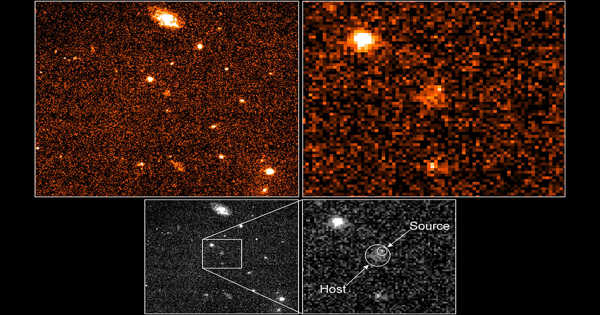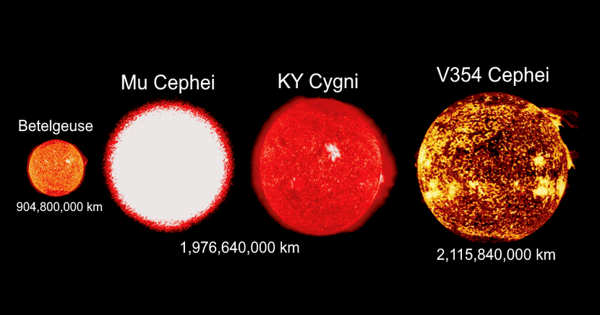A group of scientists has identified an unusual pair of brown dwarfs with the greatest separation of any brown dwarf binary system discovered so far. Since NASA’s founding in 1958, astronauts have landed on the moon, placed a robot-controlled rover on Mars, and identified thousands of exoplanets orbiting stars beyond our solar system.
“Because of their small size, brown dwarf binary systems are usually very close together,” said Emma Softich, an undergraduate astrophysics student at the Arizona State University (ASU) School of Earth and Space Exploration and lead author of the study. “Finding such a widely separated pair is very exciting.”
Because the gravitational force between two brown dwarfs is weaker than the gravitational force between two stars of equal separation, broad brown dwarf binaries are more likely to break apart over time, making this pair of brown dwarfs a rare occurrence.
The study, which is based on observations of the University of California San Diego (UC San Diego) Cool Star Lab conducted with W. M. Keck Observatory on Maunakea, Hawai’i Island, is published in today’s issue of The Astrophysical Journal Letters.
Scientists can even look into the 95% of space that is made up of dark energy, dark matter, and dark radiation. The universe’s immensity is difficult to comprehend, yet it’s expanding even faster than scientists previously anticipated. Humans will never be able to map out the entire universe, but it will not stop them from exploring it.
Members of the UC San Diego Cool Star Lab, including Physics Professor Adam Burgasser and graduate students Christian Aganze and Dino Hsu, obtained infrared spectra of the brown dwarf binary system CWISE J014611.20-050850.0AB using Keck Observatory’s Near-Infrared Echellette Spectrometer, or NIRES instrument.
Keck’s exceptional sensitivity in the infrared with this instrument was critical for our measurements. The secondary brown dwarf of this system is exceptionally faint, but with Keck we were able to obtain good enough spectral data to classify both sources and identify them as members of a rare class of blue L dwarfs.
Professor Adam Burgasser
The two brown dwarfs are around 12 billion miles apart, or three times the distance between Pluto and the Sun, according to the data. This distance verifies that the odd brown dwarf couple has broken the world record for the greatest gap between them.
“Keck’s exceptional sensitivity in the infrared with this instrument was critical for our measurements,” said co-author Burgasser, who leads the Cool Star Lab. “The secondary brown dwarf of this system is exceptionally faint, but with Keck we were able to obtain good enough spectral data to classify both sources and identify them as members of a rare class of blue L dwarfs.”
“Wide, low-mass systems like CWISE J014611.20-050850.0AB are usually disrupted early on in their lifetimes, so the fact that this one has survived until now is pretty remarkable,” said co-author Adam Schneider of the U.S. Naval Observatory, Flagstaff Station and George Mason University.
Brown dwarfs are celestial objects that are a fraction of the size of a regular star. These objects are too small to support nuclear fusion and light like typical stars, but they are hot enough to emit energy.
Many brown dwarfs have been identified using data from NASA’s Wide-field Infrared Survey Explorer (WISE) citizen science project, which asks the public to help search the WISE image data bank for brown dwarfs and low-mass stars, which are some of the Sun’s closest neighbors.
The researchers examined photos of Backyard Worlds discoveries for this study, looking for partner brown dwarfs that may have been overlooked. They detected the CWISE J014611.20 050850.0AB brown dwarf binary system in the process.
Softich combed through the WISE photographs of around 3,000 brown dwarfs from Backyard Worlds one by one, comparing them to other survey images, looking for evidence of a brown dwarf companion to the original target. Data from the Dark Energy Survey (DES) was subsequently utilized to determine that it was really a brown dwarf pair.
They then utilized NIRES at Keck Observatory to determine that the brown dwarfs have spectral classifications L4 and L8, and that they are around 40 parsecs, or 130.4 light-years, away from Earth, with a predicted separation of 129 astronomical units, or 129 times the distance between the Sun and the Earth.
The researchers expect that by making this finding, astronomers will be able to study brown dwarf binary systems and build models and processes that may aid in the detection of more of them in the future.
“Binary systems are used to calibrate many relations in astronomy, and this newly discovered pair of brown dwarfs will present an important test of brown dwarf formation and evolution models,” said co-author Jennifer Patience, Softich’s adviser at ASU.
















